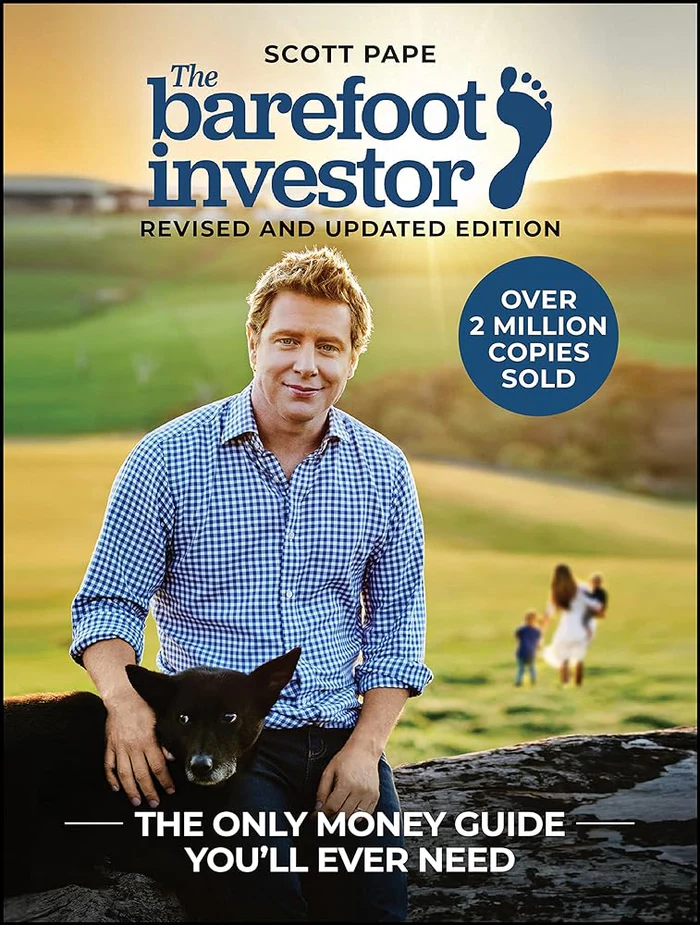The Barefoot Investor
The Only Money Guide You'll Ever Need
What's it about?
The Barefoot Investor by Scott Pape offers a practical and straightforward approach to managing your finances. It guides you through simple yet powerful steps to take control of your money, pay off debt, and start saving effectively. The book breaks down complex financial concepts into easy-to-understand strategies, emphasizing the importance of financial freedom and security. You'll learn unique methods like the Barefoot Plan and how to use Buckets for managing your cash flow, ensuring you're well-equipped to build a strong financial foundation for the future.
About the Author
Scott Pape, also known as "The Barefoot Investor," is an Australian author and financial advisor. He is best known for his practical and straightforward approach to personal finance, with a focus on debt reduction, savings, and investment strategies. His best-selling book, "The Barefoot Investor: The Only Money Guide You'll Ever Need," has empowered millions with tools for financial independence.
10 Key Ideas of The Barefoot Investor
Set Up Your Buckets: The Ultimate Way to Manage Your Money
Divide your income into three 'buckets' for effective financial management.
Allocate 60% of your income to the 'Blow' bucket for daily expenses.
20% to the 'Mojo' bucket for emergencies, and the remaining 20% to the 'Grow' bucket for wealth building.
This system ensures you're prepared for emergencies, living within your means, and investing in your future simultaneously.
Learn DeeperOpen three separate bank accounts for each of your buckets. This will help you visually manage and allocate your funds according to the bucket system.
Automate your finances by setting up automatic transfers from your main account to each of your buckets right after you receive your paycheck. This ensures that you're consistently saving and investing without having to think about it.
Review your 'Blow' bucket monthly to identify areas where you can cut back on unnecessary expenses, thereby increasing the amount you can allocate to your 'Mojo' and 'Grow' buckets.
Use a budgeting app or spreadsheet to track your spending in the 'Blow' bucket. This will help you stay within the 60% allocation and adjust as needed.
Regularly contribute to an emergency fund in your 'Mojo' bucket until you have saved enough to cover at least three to six months of living expenses.
Invest your 'Grow' bucket in a diversified portfolio of stocks, bonds, or mutual funds to build your wealth over time. Consider consulting with a financial advisor to choose the best investments for your goals and risk tolerance.
- Example
If your monthly income is $3,000, you would allocate $1,800 (60%) to your 'Blow' bucket for daily expenses like rent, groceries, and entertainment. $600 (20%) would go into your 'Mojo' bucket for emergencies, and another $600 (20%) into your 'Grow' bucket for investments such as a retirement account or stock market investments.
- Example
Jane, a graphic designer, receives her monthly paycheck of $4,000. She immediately transfers $2,400 to her 'Blow' account for her monthly expenses, $800 to her 'Mojo' account for her emergency fund, and invests the remaining $800 in her 'Grow' account, which she uses to buy shares in a diversified index fund.
Dominate Debt with the Debt Snowball Method
Prioritize paying off your smallest debts first while maintaining minimum payments on larger ones.
Once a small debt is paid off, redirect those funds to tackle the next smallest debt.
This method creates momentum and psychological wins, making it easier to stay committed to becoming debt-free.
Learn DeeperList all your debts from smallest to largest, regardless of interest rate. This includes everything from credit card debts to personal loans.
Continue making minimum payments on all your debts except for the smallest one. This ensures you don't fall behind while focusing on one debt at a time.
Allocate extra money towards your smallest debt. Any additional funds you can spare should go towards paying off this debt as quickly as possible.
Celebrate once a debt is paid off, then take the total amount you were paying on that now-eliminated debt and apply it to the next smallest debt. This 'snowball' effect increases the payment size as you move from one debt to the next.
Reassess your budget regularly to find extra money to put towards your debts. This could mean cutting back on non-essential expenses or finding ways to increase your income.
- Example
If you have three debts: a $500 medical bill, a $2,000 credit card balance, and a $10,000 car loan, you would start by putting as much money as you can towards the $500 medical bill while paying the minimum on the other two. Once the medical bill is paid off, you focus on the $2,000 credit card balance, and so on.
- Example
Imagine you receive a $1,000 tax refund. Instead of spending it, you apply the entire amount to your smallest debt (in addition to your planned monthly payment), significantly accelerating the payoff process.
Cut Up Your Credit Cards: Embrace Debit to Curb Spending
Switching to debit cards eliminates the risk of accruing credit card debt.
It forces you to spend only what you have, promoting more mindful spending habits and financial discipline.
This approach also reduces interest and fees associated with credit card debt.
Learn DeeperReview Your Current Spending: Take a close look at your bank statements to understand where your money is going. This will help you identify areas where you might be overspending.
Set Up a Budget: Based on your spending review, create a budget that allocates funds for your needs, wants, and savings. Stick to this budget to ensure you're living within your means.
Switch to Debit Cards: If you currently use credit cards for daily expenses, switch to using debit cards. This will ensure you're only spending money you actually have.
Build an Emergency Fund: Start setting aside a small amount of money each month into an emergency fund. This will help you avoid the need to use credit for unexpected expenses.
Track Your Spending: Use a budgeting app or a simple spreadsheet to track your spending. This will help you stay on top of your finances and make adjustments to your budget as needed.
- Example
If you typically use your credit card for grocery shopping, switch to using your debit card. Before you go shopping, check your account balance to ensure you have enough funds to cover your purchases.
- Example
When dining out, instead of automatically reaching for your credit card, use your debit card. This will make you more conscious of the cost of the meal and help you make choices that align with your budget.
Cook at Home: Slash Your Food Bill and Boost Savings
Preparing meals at home is significantly cheaper than dining out or ordering takeout.
By cooking at home, you can save a substantial amount of money each month, which can be redirected towards savings or paying off debt.
Additionally, it promotes healthier eating habits.
Learn DeeperPlan Your Meals for the Week: Spend some time each week planning your meals. This helps in buying only what you need, reducing waste and avoiding impulsive buys.
Learn Basic Cooking Skills: If you're not confident in the kitchen, start with simple recipes. There are plenty of free cooking tutorials online that can help you master the basics.
Make a Shopping List and Stick to It: Before heading to the grocery store, make a list based on your meal plan. This keeps your shopping focused and can help avoid unnecessary purchases.
Cook in Bulk and Use Leftovers: Cooking larger quantities can save time and money. Leftovers can be used for lunches or repurposed into new meals, making your food go further.
Invest in Good Quality Kitchen Tools: Having the right tools can make cooking at home easier and more enjoyable. You don’t need many, but a few good quality essentials can make a big difference.
- Example
If you plan to have pasta on Tuesday and a stir-fry on Thursday, you can buy vegetables that work for both meals, reducing the need to buy a lot of different ingredients.
- Example
Cooking a large batch of chili on Sunday can provide meals for several days, saving time and money. Leftovers can be used for chili tacos, chili-topped baked potatoes, or simply reheated for another dinner.
Negotiate Like a Pro: Lower Your Bills and Save Thousands
Regularly negotiate rates and fees on services like insurance, utilities, and subscriptions.
Research competitive rates and use them as leverage when negotiating with service providers.
This proactive approach can lead to significant savings over time.
Learn DeeperSchedule a Regular Review: Set a calendar reminder every 6 to 12 months to review your current rates for services like insurance, utilities, and subscriptions. This ensures you're always paying the best rate possible.
Research and Compare: Before your negotiation, spend some time researching what competitors are offering for similar services. Websites that compare rates can be particularly helpful. Having this information at hand will make your case stronger.
Prepare Your Script: Write down key points you want to cover during your negotiation. This might include how long you've been a customer, your good payment history, and the competitive offers you've found.
Be Ready to Switch: Sometimes, the best negotiation tactic is being willing to walk away. If your current provider won't offer a competitive rate, be prepared to switch to a provider that will.
Ask for Specials or Promotions: Even if a provider can't lower your regular rate, they might have special promotions or packages that could save you money. Always ask about any available deals.
- Example
Calling your internet service provider and saying, 'I've noticed that XYZ Company is offering a similar plan at a $20 lower rate per month. Can you match this offer or do better? I've been a loyal customer for over three years and would prefer to stay with you if possible.'
- Example
Reviewing your home insurance and finding a cheaper quote online. You then contact your current insurer and say, 'I've found a similar home insurance policy for $200 less annually with another company. Given my loyalty and claim-free record, I'd like to discuss options for reducing my current premium.'
Deeper knowledge. Personal growth. Unlocked.
Unlock this book's key ideas and 15M+ more. Learn with quick, impactful summaries.
Read Full SummarySign up and read for free!
The Barefoot Investor Summary: Common Questions
"You can be young without money, but you can't be old without it." - The Barefoot Investor by Scott Pape is a refreshing and practical guide to managing personal finances in a no-nonsense way. Pape's straightforward language and actionable steps make it easy for anyone to start taking control of their money. His emphasis on setting up automatic systems and focusing on minimalism in spending resonates well with readers looking for a simple approach to financial management.
While some of the advice may seem common sense, Pape's personal anecdotes and relatable examples bring a sense of real-world applicability to his strategies. The book's emphasis on creating a financial safety net and investing in a sustainable future through ethical investments sets it apart from traditional finance books. Readers who enjoyed Dave Ramsey's "The Total Money Makeover" or Jen Sincero's "You Are a Badass at Making Money" will find Pape's book to be a valuable addition to their financial literacy library.
Overall, The Barefoot Investor is a must-read for anyone looking to improve their financial well-being and gain control over their money.
Experience Personalized Book Summaries, Today!
Discover a new way to gain knowledge, and save time.
Sign up for our 7-day trial now.
No Credit Card Needed

Similar Books

The Art of Spending Money
Morgan Housel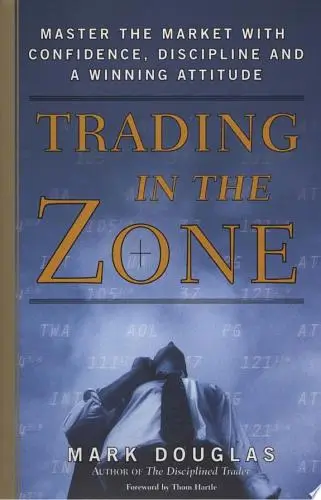
Trading in the Zone
Mark Douglas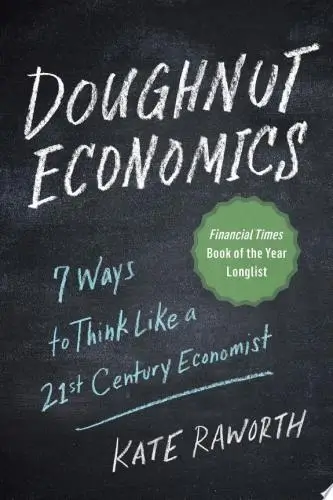
Doughnut Economics
Kate Raworth
A study guide for Barbara Ehrenreich's "Nickel and Dimed: On (Not) Getting By in America"
Gale, Cengage Learning
Bitcoin For Dummies
Prypto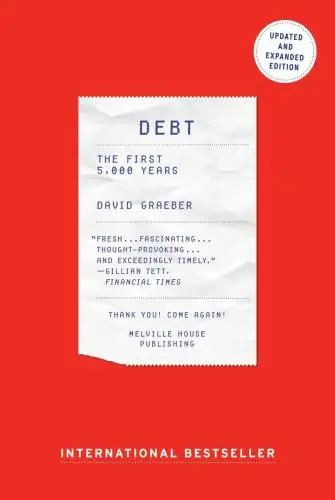
Debt
David Graeber
Money Has No Value
Samuel A. Chambers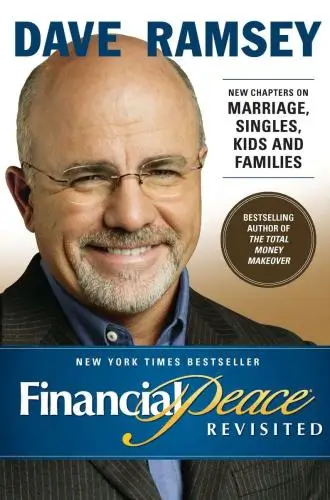
Financial Peace
Dave Ramsey
Capital in the Twenty-First Century
Thomas Piketty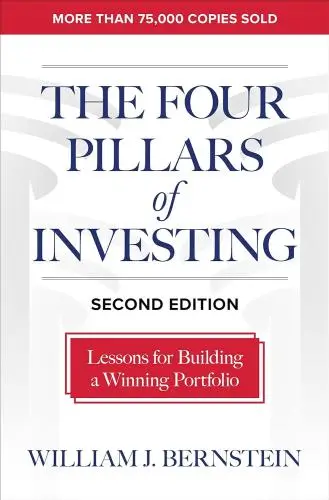
The Four Pillars of Investing
William J. BernsteinTrending Summaries

Peak
Anders Ericsson
Never Split the Difference
Chris Voss
Smart Brevity
Jim VandeHei
The Psychology of Money
Morgan Housel
The First 90 Days
Michael D. Watkins
Atomic Habits
James Clear
Thinking, Fast and Slow
Daniel Kahneman
The Body Keeps the Score
Bessel van der Kolk M.D.
The Power of Regret
Daniel H. Pink
The Compound Effect
Darren HardyNew Books

Job Interviews For Dummies®
Joyce Lain Kennedy
Job Interviews In A Week
Alison Straw
Handbook of Career Development
Gideon Arulmani
The Art of Spending Money
Morgan Housel
$100M Offers
Alex Hormozi
A Candle for Kiri
Edna Mae Holm
Principles of Marketing, Global Edition
Gary Armstrong
Serpent Rising: The Kundalini Compendium
Neven Paar
Feeling Is the Secret
Neville Goddard
